corvettes are not your average car, theres usually a good bit more horsepower,displacement and other perfoprmance mods that build heat, and alot less room under the hood for air flow thru that radiator,due to the low hood line, bottom air flow entry, ETC.
the compact space and higher performance builds heat, this is NOT necessarily bad if its controlled and stable, higher heat can be used to more effectively build power and lower emmissions AS LONG AS its controlled and predictable, and well within the lubracation and octane limits the engine can use effectively
theres INSTRUCTIONS with the kit, but basically you install the sensor and wire in any fan you choose to , following those instructions and using the new sensor. you can use the original fan, but in most cases a larger aftermarket fan or an additional transmission cooler is used. the sensor screws into the cylinder headyour coolant temp range is normal,(not ideal, but normal for a stock 1985 corvette)
engine oil needs to reach and stay at about 215F-240f to lube and clean correctly and burn off moisture
trans fluid I try to keep under 160F,surely below 180F ,
Ideally I try to keep engine coolant in the engine in the 190F-200F range but don,t get overly worried below 230F. BTW I run a 190F t-stat, temp ranges should be kept within these ranges or the wear and emmissions won,t give you the long engine and trans life and low emmission levels you expect .
, drop the coolant temps lower and you may gain a few hp but the wear tends to get worse as the fluids can,t opperate correctly, drop the oil temp below 211 F and acids can form in the oil (bad for bearings)

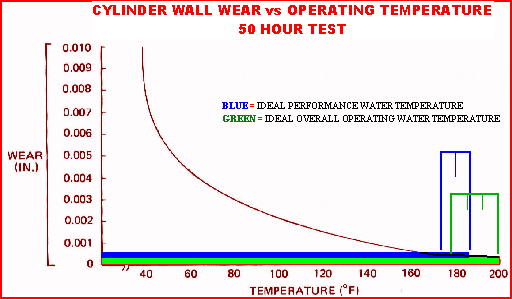
you can also install just an aftermarket fan
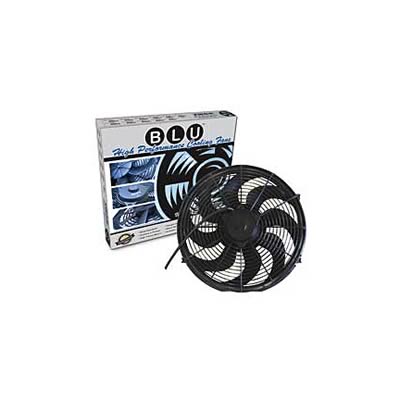
http://store.summitracing.com/partdetail.asp?autofilter=1&part=FLX-365&N=700+115&autoview=sku
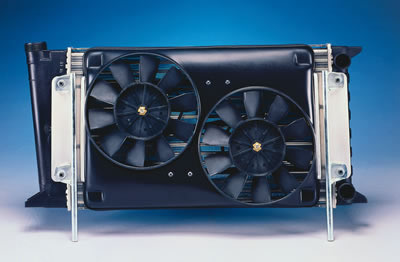
http://store.summitracing.com/partd...B16S&N=700+320174+4294775279+115&autoview=sku
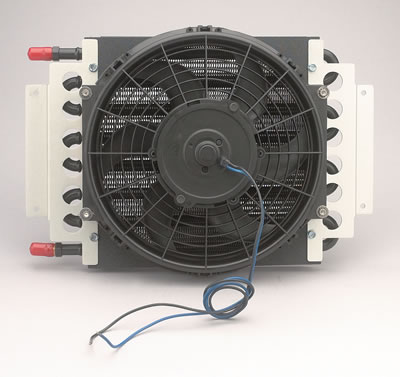
http://store.summitracing.com/partdetail.asp?autofilter=1&part=DER-13720&N=700+115&autoview=sku
http://store.summitracing.com/partdetail.asp?autofilter=1&part=DER-15800&N=700+115&autoview=sku
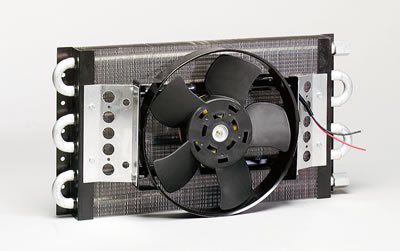
http://store.summitracing.com/partdetail.asp?autofilter=1&part=PRM-12318&N=700+115&autoview=sku
IM currently using this on my 1985 corvertte but have used others in the past
IF YOUR ON A REALLY LIMITED BUDGET, TAURUS FANS FROM A SALVAGE YARD CAN NORMALLY BE FOUND DIRT CHEAP........HERES INFO LARRY POSTED


"The two diagrams above show how to build and wire an auto relay switched 2-speed FORD TAURUS fan.
Parts needed......10 guage wire for the power circuit. 18 guage wire for the control cicuit.
Three relays..... 1) High speed relay, Tyco VF7-12V,70amps
2)Low speed relay and Aux relay, standard BOSCH relays
Two switches,,,,.1)Low speed temp. switch- Adj. Flexilite, FLX-31147 from SUMMIT.
2)High speed temp. switch from Standard Motor Products, TS-158 or TS-392.
I put the adj. low speed switch and the three relays in seperate relay boxes and mounted them in the engine comp. The high speed temp switch I mounted where one of the heater hoses went. Est. cost of parts, less the fan, is $50.00 . 10 guage wire is used in the power circuit and 18 guage in the control circuit. The 12V switched control circuit can be connected to any live connection with ignition on.
The control circuit shown is as follows..... When the temp. reaches your set low speed figure, let's say 190 deg.the low speed relay is energized thru pin 86, 85 connects to 87A of the AUX relay and pulls 30 of that relay, 87 of the low speed relay and 30 are closed sending power to the fan to run at low speed.
When the temp. reaches your high speed switch figure, let's say 210 deg. pin 86 of the AUX. relay energizes thru 85 and 30 releases from 87A of the low speed relay and connects with 85 of the high speed relay which thru 87 of that relay powers the fan to run at high speed.
ARE we confused yet?????
When the temp falls below the high speed swich figure the AUX relay will switch back to the low speed relay.
Therfore low and high speeds will never be on at the same time and you will have the following conditions...
1) No fan on.
2) Low speed on.
3) High speed on."
the compact space and higher performance builds heat, this is NOT necessarily bad if its controlled and stable, higher heat can be used to more effectively build power and lower emmissions AS LONG AS its controlled and predictable, and well within the lubracation and octane limits the engine can use effectively
theres INSTRUCTIONS with the kit, but basically you install the sensor and wire in any fan you choose to , following those instructions and using the new sensor. you can use the original fan, but in most cases a larger aftermarket fan or an additional transmission cooler is used. the sensor screws into the cylinder headyour coolant temp range is normal,(not ideal, but normal for a stock 1985 corvette)
engine oil needs to reach and stay at about 215F-240f to lube and clean correctly and burn off moisture
trans fluid I try to keep under 160F,surely below 180F ,
Ideally I try to keep engine coolant in the engine in the 190F-200F range but don,t get overly worried below 230F. BTW I run a 190F t-stat, temp ranges should be kept within these ranges or the wear and emmissions won,t give you the long engine and trans life and low emmission levels you expect .
, drop the coolant temps lower and you may gain a few hp but the wear tends to get worse as the fluids can,t opperate correctly, drop the oil temp below 211 F and acids can form in the oil (bad for bearings)


you can also install just an aftermarket fan

http://store.summitracing.com/partdetail.asp?autofilter=1&part=FLX-365&N=700+115&autoview=sku

http://store.summitracing.com/partd...B16S&N=700+320174+4294775279+115&autoview=sku

http://store.summitracing.com/partdetail.asp?autofilter=1&part=DER-13720&N=700+115&autoview=sku
http://store.summitracing.com/partdetail.asp?autofilter=1&part=DER-15800&N=700+115&autoview=sku

http://store.summitracing.com/partdetail.asp?autofilter=1&part=PRM-12318&N=700+115&autoview=sku
IM currently using this on my 1985 corvertte but have used others in the past
IF YOUR ON A REALLY LIMITED BUDGET, TAURUS FANS FROM A SALVAGE YARD CAN NORMALLY BE FOUND DIRT CHEAP........HERES INFO LARRY POSTED
"The two diagrams above show how to build and wire an auto relay switched 2-speed FORD TAURUS fan.
Parts needed......10 guage wire for the power circuit. 18 guage wire for the control cicuit.
Three relays..... 1) High speed relay, Tyco VF7-12V,70amps
2)Low speed relay and Aux relay, standard BOSCH relays
Two switches,,,,.1)Low speed temp. switch- Adj. Flexilite, FLX-31147 from SUMMIT.
2)High speed temp. switch from Standard Motor Products, TS-158 or TS-392.
I put the adj. low speed switch and the three relays in seperate relay boxes and mounted them in the engine comp. The high speed temp switch I mounted where one of the heater hoses went. Est. cost of parts, less the fan, is $50.00 . 10 guage wire is used in the power circuit and 18 guage in the control circuit. The 12V switched control circuit can be connected to any live connection with ignition on.
The control circuit shown is as follows..... When the temp. reaches your set low speed figure, let's say 190 deg.the low speed relay is energized thru pin 86, 85 connects to 87A of the AUX relay and pulls 30 of that relay, 87 of the low speed relay and 30 are closed sending power to the fan to run at low speed.
When the temp. reaches your high speed switch figure, let's say 210 deg. pin 86 of the AUX. relay energizes thru 85 and 30 releases from 87A of the low speed relay and connects with 85 of the high speed relay which thru 87 of that relay powers the fan to run at high speed.
ARE we confused yet?????
When the temp falls below the high speed swich figure the AUX relay will switch back to the low speed relay.
Therfore low and high speeds will never be on at the same time and you will have the following conditions...
1) No fan on.
2) Low speed on.
3) High speed on."
